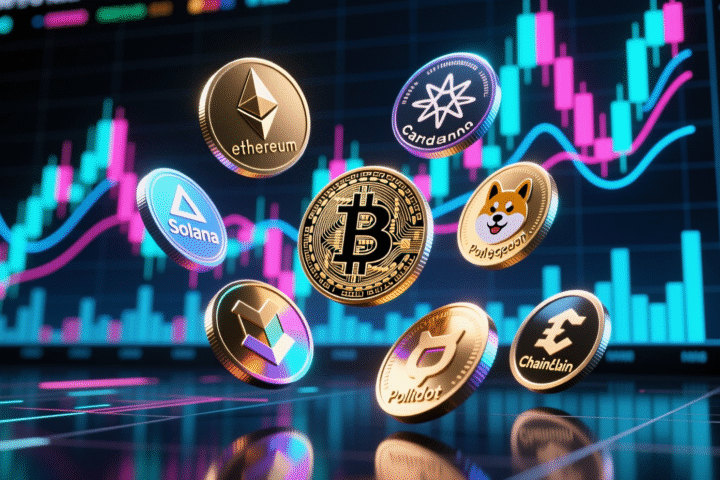NFTs (Non-Fungible Tokens) are unique digital assets stored on the blockchain, representing ownership of art, music, virtual land, and more. Unlike cryptocurrencies like Bitcoin, which are interchangeable, NFTs are one-of-a-kind. This uniqueness has fueled the rise of NFT investing, attracting artists, collectors, and investors looking to buy, sell, and trade digital assets.
While some NFTs have sold for millions, investing in them comes with risks. Prices can rise and fall quickly, and some NFTs may lose value entirely. Scams and fraudulent projects are also common, with fake sellers and misleading promises tricking buyers. Additionally, NFTs can be hard to resell, making it difficult to cash out when needed.
Understanding these risks is essential before jumping into NFT investing. This article will explore common pitfalls and how to avoid them, helping you make smarter, more informed decisions in the NFT space.
Understanding NFT Market Risks
Before investing in NFTs, it’s important to understand the risks. The NFT market can be unpredictable, and many investors lose money due to price swings, liquidity issues, and scams.
1. Price Volatility
NFT prices can rise and fall quickly. A digital collectible that sells for thousands today might be worth much less in a few weeks. This happened with many high-profile NFT projects, such as Jack Dorsey’s first tweet NFT, which sold for $2.9 million in 2021 but struggled to attract bids over a few thousand dollars later. Because NFT values depend on demand, prices can be unstable, making investing risky.
2. Liquidity Issues
Unlike stocks or cryptocurrencies, NFTs can be hard to sell. If an NFT has no interested buyers, you may be stuck holding it for a long time. Some investors purchase NFTs expecting to resell them quickly at a higher price, only to realize there’s little demand. This is especially true for lesser-known projects without strong communities.
3. Scams and Frauds
The NFT space is full of scams, and many investors have lost money due to fake projects and fraudsters. Some common scams include:
- Rug Pulls – Developers launch a promising NFT project, collect money from buyers, and then disappear. Projects like Evolved Apes raised thousands before the creators vanished, leaving investors with worthless NFTs.
- Counterfeit NFTs – Some scammers copy well-known digital art and sell fake NFTs as originals. Without proper research, buyers may purchase stolen or unauthorized artwork.
- Phishing and Hacks – Fake websites and social media accounts trick users into connecting their wallets, allowing scammers to steal NFTs and crypto.
Being aware of these risks is the first step to making smarter decisions in the NFT market. In the next sections, we’ll explore how to avoid these common pitfalls and protect your investments.
How to Avoid Common NFT Investing Mistakes
Many people jump into NFT investing without fully understanding it. Here are key steps to protect yourself and make smarter investment decisions.
Do Your Research
Before buying an NFT, take time to research the project. Look into the team behind it, the community engagement, and the roadmap (future plans). A strong project will have active developers, a clear vision, and an engaged community. If there is little information or the team is anonymous, it could be a red flag.
Related: Zama to Launch First-Ever Private Token Auction on Live Blockchain
Beware of Hype
The NFT space moves fast, and hype can drive prices up temporarily. Many people buy NFTs due to FOMO (fear of missing out), only to see values drop once the excitement fades. Just because influencers or celebrities promote an NFT doesn’t mean it’s a good investment. Always evaluate whether the project has real value beyond the hype.
Check Authenticity
Scammers often sell fake NFTs by copying popular artwork or pretending to be well-known creators. To avoid buying counterfeit NFTs:
- Verify the official website and social media pages of the project.
- Use platforms like OpenSea and Rarible, which show verified collections.
- Check the NFT’s contract address on the blockchain to confirm its legitimacy.
Consider Utility and Long-Term Value
Not all NFTs hold value over time. Some have real-world use cases, such as access to exclusive events, in-game assets, or rewards. NFTs that are part of larger ecosystems or communities tend to have more lasting value. Instead of chasing quick profits, think about whether the NFT has a purpose beyond just being a digital collectible.
By following these steps, you can reduce risks and make better decisions in the NFT space. In the next section, we’ll explore security tips to help protect your investments from theft and fraud.
Security Tips for NFT Investors
NFTs are valuable digital assets, and like cryptocurrencies, they can be stolen if not properly secured. Here are key security measures to protect your investments.
1. Store NFTs in Secure Wallets
Keeping your NFTs in a secure wallet is crucial. There are two main types:
- Hot Wallets (Online) – Examples include MetaMask and Phantom. These are convenient but more vulnerable to hacking.
- Cold Wallets (Offline) – Hardware wallets like Ledger or Trezor store your NFTs offline, making them much safer from cyber threats. If you’re investing significant amounts, a cold wallet is the best option.
2. Avoid Phishing Scams and Suspicious Links
Scammers often create fake websites and links that look like real NFT marketplaces or wallet login pages. Clicking on these can lead to stolen assets. To stay safe:
- Always double-check website URLs before entering your wallet details.
- Never click on random links from emails, Discord, or Twitter messages.
- Use official sources to access NFT platforms.
3. Be Cautious with Smart Contracts and Approvals
When you buy, sell, or trade NFTs, you often have to approve smart contracts. Some malicious contracts can give scammers control over your wallet, draining all your assets. To protect yourself:
Related: Smart Contracts Are Powering a New Wave of Finance: Here’s How
- Only approve contracts from trusted platforms.
- Use tools like Revoke.cash to check and remove risky approvals.
- If something seems off, don’t rush—research before approving any transaction.
By following these security tips, you can reduce the chances of losing your NFTs to hacks and scams. In the next section, we’ll wrap up with key takeaways on avoiding NFT investing pitfalls.
Setting a Smart Investment Strategy
A well-planned approach can help you avoid losses and make better decisions in the NFT market. Here are key strategies to keep in mind:
1. Diversify Your Investments
Instead of putting all your money into a single NFT project, consider spreading your investments across different collections or asset types. Some NFTs may gain value, while others might not. Diversification helps reduce risk and increases the chances of making profitable investments over time.
2. Set a Budget and Invest Responsibly
NFT prices can be unpredictable, so it’s important to only invest money you can afford to lose. Avoid using emergency savings or taking on debt to buy NFTs. Setting a clear budget and sticking to it prevents emotional decisions that could lead to financial stress.
3. Have an Exit Plan and Realistic Expectations
Not all NFTs will skyrocket in value. Before buying, think about your exit strategy—whether you plan to hold long-term or sell at a certain price point. Avoid assuming every NFT will be worth more in the future. Some investments may not pay off, so having realistic expectations is key.
Conclusion
NFT investing comes with exciting opportunities but also significant risks. To avoid common pitfalls, it’s important to stay informed and take a smart approach. Key steps include researching projects before investing, avoiding hype-driven decisions, verifying authenticity, and considering long-term value. Security is also crucial—storing NFTs in secure wallets, avoiding phishing scams, and being cautious with smart contract approvals can help protect your assets. Additionally, setting a budget, diversifying investments, and having realistic expectations can prevent financial losses.
The NFT space is constantly evolving, with new trends, technologies, and risks emerging all the time. Staying cautious, doing thorough research, and keeping up with industry developments will help you make better investment decisions. By approaching NFT investing with patience and a learning mindset, you can navigate this space more confidently and responsibly.










